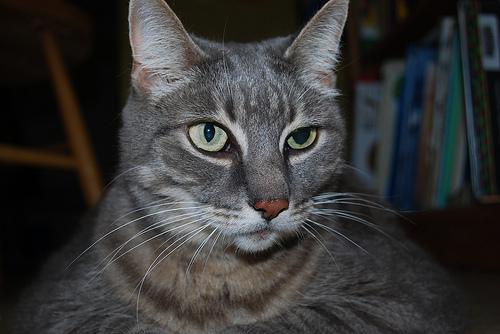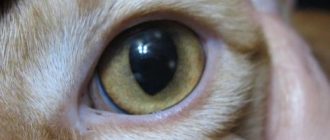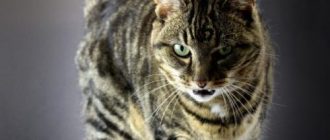What is anisocoria?
Contents
The pupil in cats is located in the center of the iris and allows light to pass through the eye into the retina. The pupil narrows or expands in accordance with the amount of light that gets into the eyes, while both pupils usually expand with dim light and shrink in bright. Anisocoria is a disease in which the pupils of the cat have different sizes, or, others in words, one pupil is larger than the other. In some cases abnormal there may be a pupil that is smaller, otherwise abnormal is the larger pupil.

What are the causes of anisocoria?
Anisocoria is usually a symptom of another disease. and is caused by many reasons:
- Corneal Damage
- A disease or injury to the brain or nerves passing through affected eye
- Glaucoma – a disease in which the inside of the eye forms increased pressure (the affected pupil will be dilated)
- Uveitis, or inflammation of the inside of the eye (affected the pupil is usually narrowed)
- Retinal diseases
- Scarring between the iris and the lens of the eye, ailment that can develop after uveitis
- Atrophy of the diaphragm or a decrease in the amount of tissue in the iris shell, i.e. degenerative changes associated with aging
- Congenital defect of the iris, in which tissue does not develops properly
- Cancer in the affected eye
- Convulsive syndrome, which may be associated with leukemia in cats.
If anisocoria occurs suddenly, you should relate to this. Seriously and as soon as possible contact your veterinarian. It will reduce the likelihood of vision loss in your cat.
How else can anisocoria be determined?
In all cases of anisocoria, the pupil of one eye will be larger or less than the other. In some cases, part of the affected eye may turn red, and the cornea become cloudy or bluish, go discharge from the eyes, the eyelid of the affected eye may not work, the cat can also squint or rub its eyes and be more active, than usual.
How is anisocoria diagnosed?
Your veterinarian will start the appointment with a physical examination of the cat, including including having her eyes examined. Depending on the preliminary findings, the vet may conduct some additional tests. He also can measure the amount of tears and intraocular pressure for every eye. The cornea can be dyed with dye, to find possible injuries or ulcers on her. Biopsy and analysis on conjunctivitis can be studied after receiving analyzes from laboratories. In some cases, analysis may also be performed. blood to determine if it is related to other diseases, such as leukemia.
In other cases, your veterinarian will recommend you visit veterinary ophthalmologist for further testing.
How to treat anisocoria?
The treatment of anisocoria depends entirely on the cause diseases. Sometimes a cat is given a specific treatment in quality of diagnosis. The veterinarian will discuss possible options with you treatments that are right for your cat and her specific features.
Will my cat recover?
The prognosis of cure depends entirely on the cause of anisocoria. IN in some cases, your cats will need long-term medication use to control the source of the disease. If your the cat becomes blind as a result of anisocoria, then restore vision it will be very difficult.






